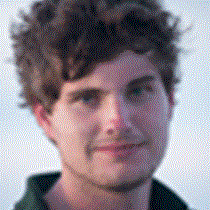Early in the morning we arrived to Fernandina, located in the west of the Galapagos Islands. It is one of the most pristine places on earth, the youngest island of Galapagos and also one of the most active volcanoes in the world. Not every visitor staying in Galapagos has the opportunity to see this marvelous place. One of the reasons is because it is so far away from the arrival ports.
Well! Here we are, ready to explore this unique place. We landed on some volcanic basaltic lava at low tide; the entire intertidal zone was very exposed to all creatures that feed on this area, such as marine iguanas, birds like herons, oystercatchers, whimbrels, ruddy turnstones, and some crustaceans. Hundreds of black huge marine iguanas were basking on the rocks, others moving into the water to get some algae to eat; the summit of “la cumbre” volcano was clear and the view was spectacular. The morning was warm and shiny, perfect climate for such a magnificent place.
We walk in land, for about two hours, we found the ever green forest of mangroves, the very first plant that colonized the coast of new places on earth. A couple of Galapagos hawks appeared up in the sky; they are the main predator for iguanas and many other creatures. They are birds on the top of the food chain here. Another plant that is very common to see here are the lava cacti, they are also known as pioneer plants that help other organisms to survive on barren lava. On our way back to the shoreline we found several turtles warming up, floating right on the surface of the water in pools. Flightless cormorants were seen, too. One of the highlights of the day were some newborn baby sea lions being fed by their mothers. It was a very nice morning and our guests much enjoyed it.
Later, after lunch we moved to Isabela Island, to a place called Punta Vicente Roca located at the Northside of this big island that is formed by six volcanoes, one of them was named Ecuador, for our country and because it is located at the Equator line. We went just to snorkel along a very high impressive cliff, the activity was super, it is a place in Galapagos were you can find many kind of animals, in fact you swim here with a few members of each of the main group of animals living on our planet: fish, many kinds with iridescent colors like harlequin wrasses, king angels, razors etc.; mammals like fur sea lions and Galapagos sea lions; birds like penguins and flightless cormorants; and reptiles such as marine iguanas and marine turtles. All of our intrepid snorkelers were just astonished by tons of turtles floating just couple of feet from their faces. It is one of the most memorable experiences that one can get here in Galapagos.
Then after snorkeling, we had a Zodiac ride to appreciate the geological formations of this place, the collapsed wall of the volcano is very high and along the cliff you see very clear some lava dikes that were formed when very hot new lava is ejected from the bottom of the volcano, soar of sub-vents all the way up to the top, drilling the old material. A colony of Galapagos fur sea lions decorate our exploration. They are good rock climbers and are seen always in caves to avoid the heat because of their very thick denser skin full of blubber, also they are nocturnal predators to avoid competition against the regular sea lions that we find almost every day of our week on sandy beaches.
To end our great day, after this visit, our captain Fausto Hinojosa led our ship to the Equator line. We congregated at the bow of our ship, and while navigating we spotted some molas, a giant fish that looks like a huge flounder but that swims in deep water in a vertical way and shows one of its dorsal fins like a shark. The sunset was amazing and presented a surprise. We passed the line and celebrated in a very happy, contagious manner. The sun disappeared below the horizon and some guests said they saw a green flash, but then someone exclaimed, “dolphins!” And yes, indeed! Some spinner dolphins did a great show for us. A great finale for a great day!






